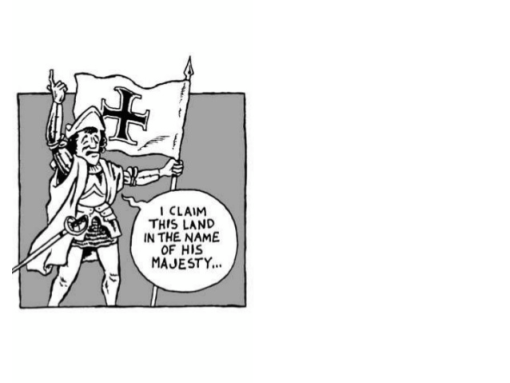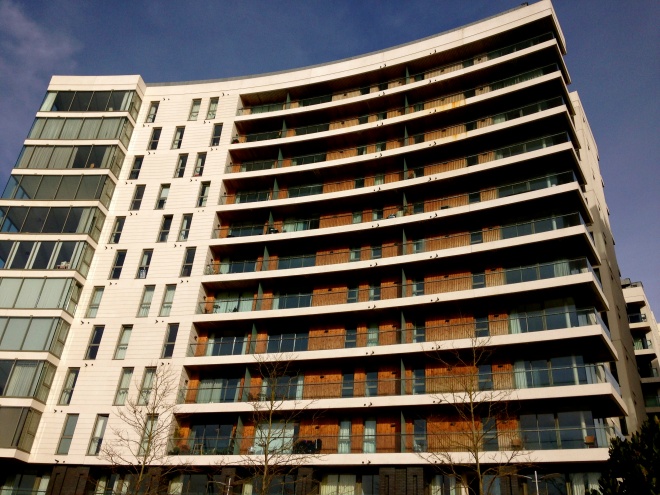Urban environments can provide unique insights into how identity issues impact upon on spatial organisation of cities, and how lived, embodied experiences shape spatial territories in a literal and symbolic fashion. In this enquiry, conflict and contestation are the themes under consideration. The main focus is based on fieldwork undertaken in Belfast, but with references to urban unrest in Hyderabad and Mumbai.
The conflict in Belfast has ostensibly been fought under the guise of religion and beliefs but perhaps this ‘tug-of-war’ between the Catholic and Protestant community has been less a battle of opposing cosmologies but is actually associated with issues of nationality and identity. As Boal (2002) suggests ‘the religious labels really signify [a] more broadly ramifying ethnic difference’ (p688). Ethnicity appears to be a much more significant issue among the labouring class, as ‘the intense ethnonational… [divide] is predominantly a working class phenomenon’ (p693). This suggests that once you have economic capital, you are removed from the space of contestation. Appadurai (2000) highlight this when he notes that in Bombay ‘what [really] counted was the colour of money’ rather than ethnic origin. Nonetheless when a working class individual enters the urban world ‘ethnicity’ becomes significant, as they cannot simply ‘purchase’ their space; they need to, as a group, claim their stake in the land. It is ‘where’ you come from and ‘who’ you relate too that becomes your most germane feature as ‘people… [categorise] each other according to their place of origin’ (Erkisen 2015, p310). The issue of ‘origin’ in Belfast was made clear to us when our Black Taxi Tour guide revealed the system the working class populous had come up with ‘to identify their enemies’. They would ask a sequence of questions – ‘What’s your name?’ ‘What school did you go to?’ ‘Where do you live?’ This would give them enough information to identify whether the person was a Catholic or Protestant. The information indicates their origins in a number of ways; certain names are associated with each community, the majority of the schools in Belfast are tied to a certain ethos, and there are a number of segregated communities in Belfast, which ‘belong’ to each religion.
Social exclusion is caused by the Peace Walls as physical interventions that cut through the working class neighbourhoods. Our guide informed us that the walls were ‘put up with the will of the people to keep people out’. This, partnered with the longevity of the walls (present in cityscape for 45+ years) shows that a lack of desire to intermingle has been continuous. Livingstone et al substantiate this when reporting that churchgoers would be ‘more willing to accept ‘inter-racial’ marriage than Protestant/Catholic marriage’ (1998, p152). The focal point here is ‘accept’, as this implies that either marriage situation would be an issue that they would have to come to terms with; indicating that social isolation/exclusion of the communities and the distance of ethos, is the consensus gentium. The walls can provide such spatial separation as they divide up the city, and provide ‘protection but at the same time isolation’ (Marcuse, 1994, p43) as they keep out the presence of the ‘other’. This desire may be due to the illusion of the ‘universal tendency of being more comfortable with one’s own, especially in times of political tension (Livingstone et al, 1998, p155). The notion of being with one’s own takes on a more complex form of identity in Sen’s analysis of violence in the streets of Hyderabad in relation to the child militias who policed Muslim space. Their loyalty was directed towards their own demographic group, so violence was intergenerational. They would punish family members who violated imposed codes of practice, as well as tradesmen and other adults. They deliberately disassociated themselves from Muslim religious leaders who wished to valorise their activities, calling themselves soldiers rather than jihadis. This form of group identity is counter to the idea of family being a construct of safety, so home as a spatial site is one of conflict.

Although isolation is present it is untrue to say that it is the only way in which Belfast functions, as it ‘is not divided into two almost hermetically sealed segments’ (Boal, 2002, p693). Indeed, as political tensions have decreased, there has been an increase in the number of mixed communities – albeit mainly middle and upper class neighbourhoods. This goes to support the earlier point that money is the highest shareholder when it comes to claiming and inhabiting space. The notion of mixed communities in relation to affluence finds a different expression in Mumbai. Appadurai points out that many workers undergo ‘complex transformations in transit’ as they move from ‘oppressed dwellers in shantytowns…into well dressed clerks, nurses…[and] bank tellers’ (p636). This sense of a double identity also plays out in another respect. Whilst there are acute differentiations in terms of economic empowerment between classes in Mumbai, they often share the same space. The poor live in the doorways, stairwells and pavements of the affluent. This is a compression of space, so that spatial boundary is literally determined by body. As Appadurai stresses, people are literally stepped over, positing the thought that these individuals are symbolically unseen. Despite proximity, the illusion is one of continuing separateness. Importantly as Shirlow points out, in relation to Belfast, ‘mixing is not the same as integration… residents still perform their social life among largely sectarian lines’ (2006, p102) This leads one to question, why, if there is not a conflict among the middle and upper classes, there is one between the lower classes, and why this mentality prevails. Perhaps this can be explained by the decline of violence in the 1970s due to the increase of voters supporting Sinn Féin resulting in the British state attempting to build relations with the Catholic middle class ‘whose loyalty they sought through an injection of public funds’ (Shirlow, p100). The growing political process of legitimate legislative inclusion in the British societal structure meant that the Catholic middle classes no longer had to ‘fight’ as they had found a way to engage with decision-making, allowing their voice to be heard.
The divide between the working classes in Belfast, particularly in communities in contiguous space results in an ‘us and them’ mentality forming, leading to both groups constructing ways to differentiate from one and other, to strengthen their cultural apartness symbolically (Graham, 1998). This can be seen in the ways they decorate their neighbourhoods, to present physically who this space belongs to. Although they both use similar techniques to do this, there is still a strong contrast in the symbolic imagery. Both communities paint memorials on the side of homes and walls, but they are associated with specific individuals and have a semblance of propaganda – Catholics paint IRA/Sién Fenn ‘heroes’, whilst Protestants paint images of military officers and Ulster unionists. The Memorials have a potent physical presence, creating a vehement ‘form of territorial marking and an illustration of territorialised power (Shirlow, 2006, p103).
An alternative way for these communities to decorate their neighbourhoods, to display their ‘nationhood’ is through the process of flag flying; Protestants will hang the Union Jack, whilst Catholics the ‘Irish Tricolour’.
Flags are significant symbols as they delineate the ethos of a nation evoking passion in the people. Sen indicates to their emotive effects in her 2012 study of Hyderabad; riots broke out due to a ‘dispute over the placing of religious flags in public places’ (p72) – the riots happen as once the flag is placed in a space it is seen as belonging to the symbolised group. In some sense flags conjure up imagines of colonialism, with empire claiming their territory – it would not be too farfetched too say this is what is taking place in Belfast. These spaces have been ‘claimed’, and strengthen the larger communities.
 Once a space has been ‘claimed’, it becomes a sort of ‘no-go zone’ for an opposing community member. Our guide alluded to this feeling of restriction by saying ‘if you’re a Catholic you don’t go to Shankill Road, and the same goes for a Protestant in Falls Road’. The indication here is that something bad will happen if you ‘trespass’. He went on to describe Belfast as a ‘chessboard, with black and white zones for the Protestants and Catholics’. This is an interesting metaphor as the pieces in chess can only move in certain ways the rules allow; this is also the case for the residents of Belfast as unofficial laws limit their navigation of the city.
Once a space has been ‘claimed’, it becomes a sort of ‘no-go zone’ for an opposing community member. Our guide alluded to this feeling of restriction by saying ‘if you’re a Catholic you don’t go to Shankill Road, and the same goes for a Protestant in Falls Road’. The indication here is that something bad will happen if you ‘trespass’. He went on to describe Belfast as a ‘chessboard, with black and white zones for the Protestants and Catholics’. This is an interesting metaphor as the pieces in chess can only move in certain ways the rules allow; this is also the case for the residents of Belfast as unofficial laws limit their navigation of the city.
It is understandable that Belfast has a desire to rebrand its image – to escape its legacy of violence, and in turn attract foreign and national investment. However as a city, they need to be cautious of rebranding and associated globalisation of the city as it creates ‘new social divisions’ (Shirlow, 2006, p100). This is due to a feeling that it predominantly benefitting the already wealthy, whilst the poor get forced out, not only of residential zones, but also from leisure/entertainment spaces: ‘the city’s new hotels… employ security guards to keep the locals out’ and ‘apartments… sit boldly overlooking the riverfront… beyond the means of the many citizens’ (Shirlow, p99). This feeling of a city developing ‘without’ its residents is illustrated in Sen’s (2012) ethnography of Hyderabad, where a boy from the slums states ‘the city has run ahead, we are left behind, the same riots, the same poverty’ (p72). This abandonment of the poor might in turn lead to new conflicts over space – one that is not fought between ethnicity or religion, but one that is fought between social classes.

Although Belfast and the Indian cities are worlds apart, there are common underlying themes of violence that play out in unique ways within each cityscape as people attempt to claim dominance of space: ‘space matters because it mediates the experience of people in places… it shapes the structure of opportunity set available to them’ (Heikkla, 2001, p266).


Works Cited
Appadurai, A. (2000). Spectral Housing and Urban Cleansing: Notes on Millennial Mumbai. Public Culture, 12(3), pp.627-651.
Boal, F. (2002). Belfast: walls within. Political Geography, 21(5), pp.687-694.
Eriksen, T. (2015). Small Places, Large Issues: An Introduction to Social and Cultural Anthropology. 1st ed. London: Pluto, p.310.
Graham, B. (1998). Contested images of place among Protestants in Northern Ireland. Political Geography, 17(2), pp.129-144.
Heikkila, E. (2001). Identity and Inequality: Race and Space in Planning. Planning Theory & Practice, 2(3), pp.261-275.
Livingstone, D., Keane, M. and Boal, F. (1998). Space for religion: a Belfast case study. Political Geography, 17(2), pp.145-170.
Marcuse, P. (1994). Walls as Metaphor and Reality. In: S. Dunn, ed., Managing Divided Cities, 1st ed. Keele: Ryburn Press, pp.41-52.
Sen, A. (2012). ‘Exist, endure, erase the city’ (Sheher mein jiye, is ko sahe, ya ise mitaye?): Child vigilantes and micro-cultures of urban violence in a riot-affected Hyderabad slum. Ethnography, 13(1), pp.71-86.
Shirlow, P. (2006). Belfast: The ‘post-conflict’ city. Space and Polity, 10(2), pp.99-107.















